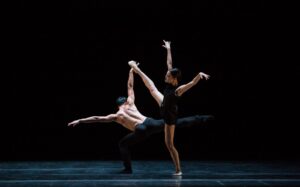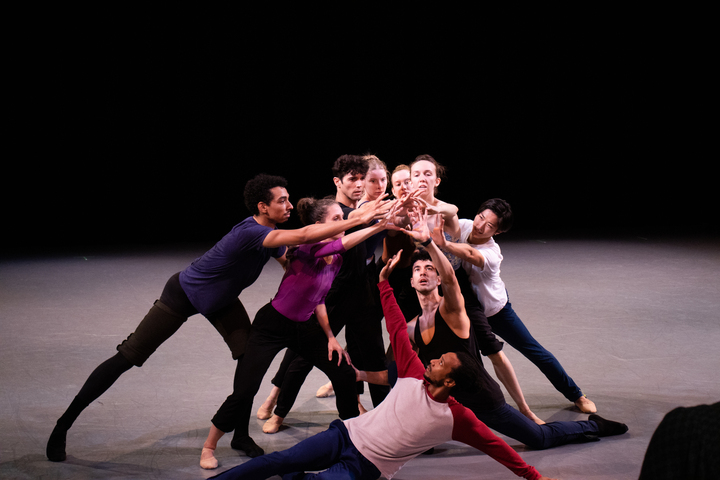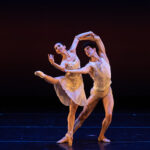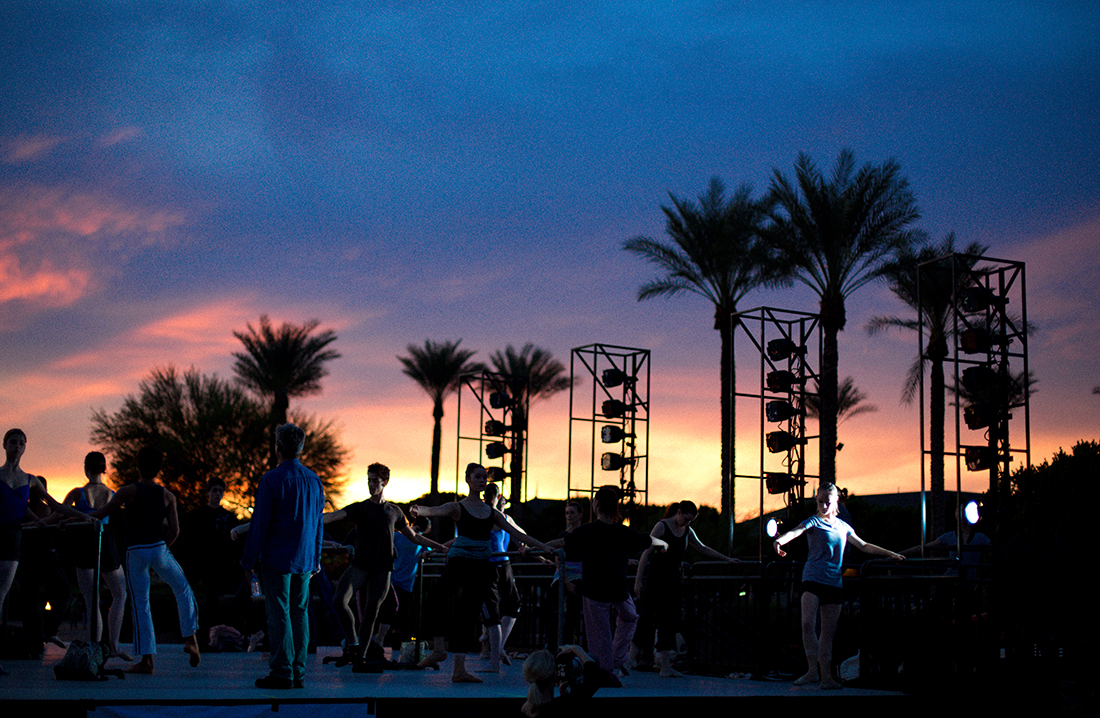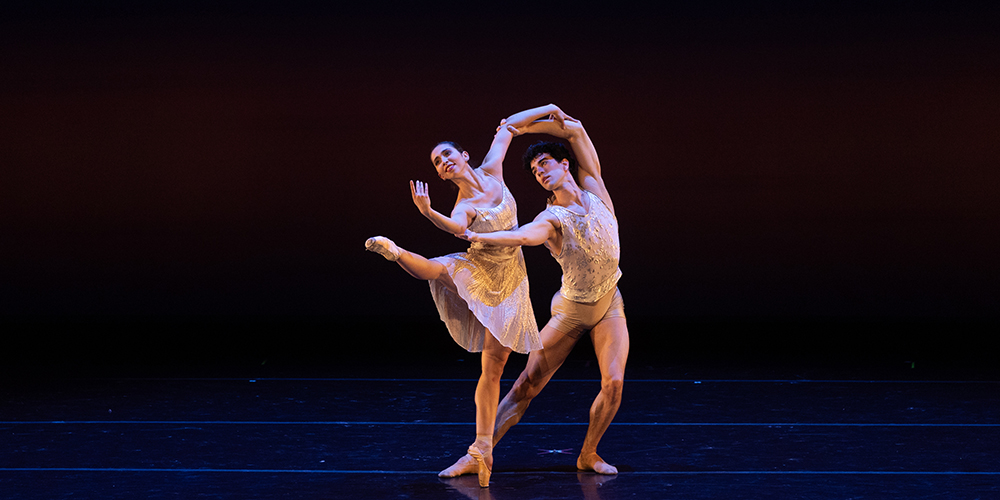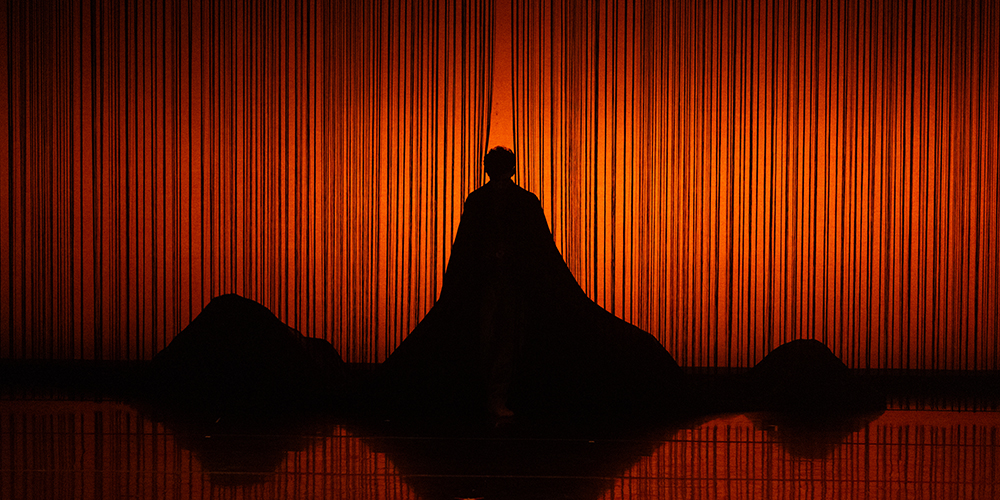15 September, 2022
SETTING THE SCENE: AN INTERVIEW WITH JASON FOWLER
Ballet Arizona’s Q&A from Studio Spotlight Featuring Contemporary Moves
At our Studio Spotlight, we had the pleasure of speaking with Jason Fowler, where he set the scene for the Arizona premiere of Christopher Wheeldon’s Within the Golden Hour and the preparation it takes to prepare for a ballet.
Q: Thank you, Jason, for joining us. To start, could you introduce yourself & tell us a little bit about your background?
J: I’m Jason, like she just said. I grew up in Dallas, until I was 16, moved to New York and trained at the School of American Ballet, joined the New York City Ballet at 18. I did dance there for 15 years. I danced with Chris and I started staging his ballet the year that I retired from ballet in 2010. So, this is going on year 13 of that.
Q: So, your role this week has been as a répétiteur. Could you explain what that means and what that job entails?
J: So, a répétiteur’s job is to notate the ballet. So, there are different methods of notation. There’s a Benesh method, which is a very European style of notation and then you can make up whatever you want as far as you have to, write down every single count, every single move, every single entrance, exit, music for all the dancers. So, you spend a lot of time doing notation, and then you come into the studio with the dancers. You cast the ballet usually if the choreographer is alive or not available, and then you teach every single part of the ballet. And then if you’re using your own, then you take your costumes and lighting and you put in on stage. So, you just sort of basically produce the whole entire ballet. And, yeah, it usually takes, I would say for, like a one act ballet like this, it takes about three weeks to sort of get it up and running maybe four. We have a little bit less time with this schedule. So, I think that it’s a 30 minute ballet, and I think we’ve learned every section except for the finale as far as up today. So, should finish it by Wednesday and then rehearse, rehearse, rehearse, clean, clean, because obviously they just learned the steps. It takes them a while to get it in their bodies to really become familiar with the music and then space it out, perfect it, and then get it up and going.
Q: And our audiences have never seen Within the Golden Hour, at least not in Arizona. So could you set the scene a little bit? Because we won’t be able to see rehearsal this evening. If they just started on Monday, so there’s still quite a bit to do. But could you kind of set the scene for what the ballet looks like & the concept behind the piece?
J: So, just some background on this, it was choreographed in 2008, that was the premier for the San Francisco Ballet. And they’ve been the only company to do it other than the Royal Ballet. The Royal Ballet in London did it about two years ago. So, this is the third company to do it ever, actually. It’s going at around the same time as another company in St. Louis, which is pretty exciting. It’s a really beautiful ballet. Actually, I was still dancing when it was choreographed, so I wasn’t around for it, obviously I didn’t dance in San Francisco. So, I’ve been learning it through video. I’ve seen it on San Francisco Ballet, I’ve seen the Royal Ballet do it, but I’ve never actually learned it, notated it. Although I’m familiar with his movement, obviously, and lots of the steps. It’s all in a different sort of like, it’s organized differently. It’s sort of like a puzzle figuring that out, but it’s really fun and challenging. The ballet is quite beautiful; it’s contemporary, it has lots of classical elements to it, specifically with the music. There’s no story to it as many one acts or like, but I mean, it can be interpreted however you like. It’s called Within the Golden Hour, so you can only imagine the lighting. The lighting outside about 30 minutes ago is very golden this evening. And yeah, it’s got seven sections; it’s got an opening section, it’s got a waltz, it’s got a men’s dance, it’s got a very interesting, almost out of this world. We got a ladies dance; it’s very interesting. And then the last section, which is Vivaldi, is very intense. It’s just high energy, it’s beautiful.
Q: And you mentioned the music. I’ve seen a little bit of rehearsal and it’s absolutely beautiful. So, could you tell us about the music, what it brings to the piece, & maybe if you know anything about the composers, that would be great.
J: The music mostly is composed by Ezio Bosso, Italian composer, and one section by Vivaldi, so you can see how classical that might be. And they’re very similar in their style and they really blend well together. So, Ezio Bosso actually was a living choreographer when Chris choreographed it. He passed away just a couple of years ago and he’s done lots of movie soundtracks and it’s very sort of cinematic, if you will. Very colorful, lots of strings, quite stunning. The music, it takes you on a journey.
Q: And then setting somebody else’s work, having to understand the artistic vision and all of that. I’m sure it’s a very big challenge sometimes. Could you talk about some of the challenges you might face as a repertoire & setting another work?
J: I guess first off is walking into a company that you don’t really know. I haven’t worked with this company. So, obviously the company has changed and the building, [Ballet Arizona’s] amazing facilities. So coming in and watching them take a class and casting the entire ballet based off of a 20 minutes class that you’re watching. It can be a challenge when you only have a certain amount of time. Also, you’re under time restraints. There are obviously two other ballets going in the program; this company is very busy. It’s only 24 dancers, so you’re limited in your time, so that’s a challenge. You don’t know how quickly the dancers are going to pick up steps and learn the choreography & the movement and style. So, that’s something that you really have to hone in on, as well as keeping your notation correct and trying to not push too hard, finding a flow, a pace that is good for the dancers. Depending on the company that you’re working with, everybody learns differently, and so you have to sort of feel the room and be relatable. I mean, we’re all people. We deal with each other’s emotions, and everyone’s different every single day, right? So you can’t just bang in the same steps and have the same expectations every single day, right. We all go through ebbs and flows of energy and emotion. So, you have to be able to be understanding and kind and also be direct and get to what’s important, and that’s maintain the artistic integrity of the ballet. And when it comes down to it, I’m Chris’s eyes. I represent Chris’s team, so that’s the most important thing to me. And when he comes in two weeks and he sees the company do this for the first time, I want him to be very proud of the work that we’ve done together and feel like we’ve accomplished a lot. So, you’re sort of pulled in both directions, but it keeps you, like on point. Pun intended.
Q: Were you responsible for casting?
J: I was, yeah. I did casting on Monday during ballet class. I think it came in, like, halfway through class because I don’t want to see people do pliés at the bar. Like, we can all do pliés, but I want to see them dance. So, yeah, they passed two different casts & then a bunch of extras to learn different roles, because you never know. One of the boys, first cast, has a back injury, so hopefully he’ll be back next week. Pun intended, again, there you go. Next week. But he’s got to kind of learn the whole thing from the beginning. And three girls were gone for an educational thing. So yeah, the answer is yes.
Q: Correct me if I’m wrong, you’re the first répétiteur to mention notation. So, is that something Chris Wheeldon prefers or is that something of your own choice?
J: It’s not a preference from Christopher. I didn’t know any Benesh and I didn’t go to school for Benesh, but I’ve learned some basic Benesh methods over time, working with people in Europe that worked for the actual institution that I’ve been on the road with, it’s a really complicated; it takes three or four years to learn and study Benesh method completely. So I don’t have that education all the way through. I have my own interpretation. So, a lot of it is muscle memory. But after doing this for 13 years and I staged all of Christopher’s ballets, the full lengths and the one acts included. We also have a team, but I’ve covered them all. Your mind is only capable of retaining so much information. So, I incorporated some Benesh methods into my notation. It could be that I’m just drawing an arrow or I’m just actually talking about a step, or I’m actually using our French words that we use in ballet. Luckily, Chris’s work is mostly classically based, so I can use a lot of the French terminology, but some things are not. The neoclassical stuff don’t have a finished notation yet. And you can’t actually notate all the in-between steps, all the affectations & the breaths and the transitions that go in between, that just comes from experience. So, the notation has definitely helped me. When I look at my notation on reading to the dancers, I’m able to know where the dancers placements are, which way they’re facing and angles, and it’s got little different symbols, & it’s really interesting. But requires a few years of study in it.
For the second part of the evening, we spoke to our wonderful Rehearsal Director, Maria Simonetti, to talk a little bit about Alejandro Cerrudo’s Pacopepepluto and Second to Last.
M: I met him [Alejandro Cerrudo] many years ago in Chicago while teaching at Hubbard Street and I immediately felt he was very talented. So when the company came to Scottsdale, I told [Ib] we should go see them. And he saw his work and really liked him. And so then we first commissioned Off Screen. There was an existing work. Then he came and did Second to Last, which was originally a premiere for us. And then we invited him.
We commissioned Pacopepepluto, which are the solos you’re going to see tonight. And yesterday I said there are three really fun solos. Some of you have seen them. The boys are not wearing very much clothes. They will today because the lighting is not what it should be. But in any case, I said, Alejandro, let’s talk a little bit about this. And there were some things I have forgotten, but I think they’re worth sharing with you.
So at the time he choreographed this in 2011, he was already the resident choreographer at Hubbard Street. But himself, he was a dancer at the Netherlands Dance Theater. And in Europe, they’re used to sometimes having women topless. And so he wanted to make a statement here, having the men with less clothes. And he asked, do you think we can do this? So they decided to do it at a choreographic workshop so that it was not a commission work, so that if it didn’t work out and it was a disaster, then it would be forgotten and they could justify, okay, this was just a little experiment. But the experiment turned out to be a great success.
The solos are, first of all, very difficult. There’s very difficult vocabulary. They’re also extremely long, the length of an entire song, where the boys are dancing nonstop. And so the rest is history in the sense that many ballet companies, like Pacific Northwest has said some of the soloist of ABT and principal dancers have done it. And it’s a great piece because it’s a lot of fun and the dancers enjoy doing it. And that’s it. I don’t think I should talk any more.
And then the name Paco, Pepe, Pluto – their three names, three Spanish sort of nicknames. Paco is the first one, Pepe is the middle one & Pluto is the last one. And Alejandro said, my idea was to have these guys basically dancing naked at home and feeling as if someone’s watching them through – how do you call – the hole of the key, where you put the key, the keyhole? So they sort of feel and you’re going to see it in the choreography. At the time, they’re kind of sensitive that maybe someone’s watching, but they’re not quite sure. And at the same time they’re kind of enjoying the attention because they have the high self-esteem of themselves anyway.
